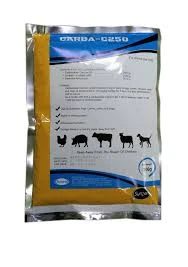- Afrikaans
- Albanian
- Amharic
- Arabic
- Armenian
- Azerbaijani
- Basque
- Belarusian
- Bengali
- Bosnian
- Bulgarian
- Catalan
- Cebuano
- Corsican
- Croatian
- Czech
- Danish
- Dutch
- English
- Esperanto
- Estonian
- Finnish
- French
- Frisian
- Galician
- Georgian
- German
- Greek
- Gujarati
- Haitian Creole
- hausa
- hawaiian
- Hebrew
- Hindi
- Miao
- Hungarian
- Icelandic
- igbo
- Indonesian
- irish
- Italian
- Japanese
- Javanese
- Kannada
- kazakh
- Khmer
- Rwandese
- Korean
- Kurdish
- Kyrgyz
- Lao
- Latin
- Latvian
- Lithuanian
- Luxembourgish
- Macedonian
- Malgashi
- Malay
- Malayalam
- Maltese
- Maori
- Marathi
- Mongolian
- Myanmar
- Nepali
- Norwegian
- Norwegian
- Occitan
- Pashto
- Persian
- Polish
- Portuguese
- Punjabi
- Romanian
- Russian
- Samoan
- Scottish Gaelic
- Serbian
- Sesotho
- Shona
- Sindhi
- Sinhala
- Slovak
- Slovenian
- Somali
- Spanish
- Sundanese
- Swahili
- Swedish
- Tagalog
- Tajik
- Tamil
- Tatar
- Telugu
- Thai
- Turkish
- Turkmen
- Ukrainian
- Urdu
- Uighur
- Uzbek
- Vietnamese
- Welsh
- Bantu
- Yiddish
- Yoruba
- Zulu
Dec . 20, 2024 06:08 Back to list
Exploring Advances in Antifungal Treatments for Veterinary Medicine and Animal Health
Veterinary Antifungal Agents An Essential Component of Animal Healthcare
The veterinary field has evolved significantly over the years, with researchers constantly seeking advanced methods to combat diseases that affect companion and farm animals. One critical area of focus in veterinary medicine is the management of fungal infections. Fungal pathogens can cause severe diseases in animals, which can result in significant discomfort, health complications, and economic losses. Understanding and using effective veterinary antifungal agents is thus essential for maintaining animal health and welfare.
Fungal infections in animals can arise from various sources, including environmental exposure, underlying health issues, and compromised immune systems. Common fungal pathogens that impact veterinary medicine include *Candida*, *Aspergillus*, *Cryptococcus*, and dermatophytes such as *Microsporum* and *Trichophyton*. These fungi can lead to a range of conditions, from superficial skin infections and allergies to systemic diseases affecting vital organs like the lungs and kidneys.
Antifungal Strategies in Veterinary Medicine
The approach to treating fungal infections in animals typically involves the use of antifungal medications. These agents can be categorized into several classes, each with distinct mechanisms of action. The most widely used antifungal agents in veterinary practice include azoles, polyenes, and echinocandins.
1. Azoles This class includes drugs such as fluconazole and itraconazole, which inhibit the synthesis of ergosterol, an essential component of fungal cell membranes. By disrupting ergosterol production, azoles induce membrane permeability changes leading to fungal cell death. Azoles are often preferred due to their broad spectrum of activity and relative safety in various animal species.
2. Polyenes Amphotericin B is a well-known polyene that binds to ergosterol, forming pores in the fungal cell membrane, which results in cell lysis. Although amphotericin B is effective, its use is often limited due to potential toxicity in animals, particularly in cats and dogs. In veterinary practice, the use of lipid formulations of amphotericin B has been employed to minimize these adverse effects while maintaining antifungal efficacy.
veterinary antifungal

3. Echinocandins This newer class of antifungal agents, including caspofungin and anidulafungin, inhibit the synthesis of β-(1,3)-D-glucan, a vital component of the fungal cell wall. Echinocandins are primarily effective against Candida and Aspergillus species and have been noted for their safety profile, making them a valuable option for treating invasive fungal infections in veterinary patients.
Challenges in Antifungal Treatment
Despite the availability of various antifungal agents, challenges remain in effectively managing fungal infections in veterinary medicine. One significant concern is the development of antifungal resistance. Similar to human medicine, the overuse and misuse of antifungals in animals can lead to resistant fungal strains, complicating treatment options. Hence, proper diagnostic procedures and susceptibility testing are critical in guiding antifungal therapy.
Another challenge is the formulation of antifungal agents suitable for animal use. Many antifungals designed for humans require adjustment in dosage and form to safely and effectively treat animals. Research into veterinary-specific formulations is ongoing, aimed at improving the pharmacokinetics and pharmacodynamics of these agents.
Conclusion
Veterinary antifungal agents play a crucial role in the management of fungal infections affecting animals. As the incidence of these infections rises, particularly in immunocompromised or stress-laden animals, the importance of effective antifungal treatment cannot be overstated. Veterinary professionals must remain vigilant in selecting appropriate antifungal therapies, taking into account the unique needs of each patient while being mindful of the potential for resistance. Continuous research and advancements in antifungal agents will be paramount in enhancing animal health and welfare in the face of fungal challenges.
-
Guide to Oxytetracycline Injection
NewsMar.27,2025
-
Guide to Colistin Sulphate
NewsMar.27,2025
-
Gentamicin Sulfate: Uses, Price, And Key Information
NewsMar.27,2025
-
Enrofloxacin Injection: Uses, Price, And Supplier Information
NewsMar.27,2025
-
Dexamethasone Sodium Phosphate Injection: Uses, Price, And Key Information
NewsMar.27,2025
-
Albendazole Tablet: Uses, Dosage, Cost, And Key Information
NewsMar.27,2025













